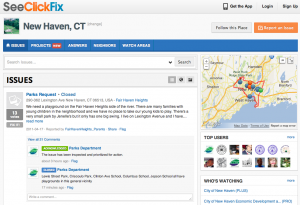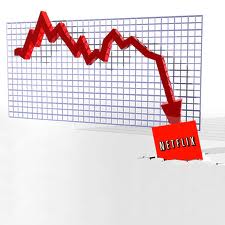 The collapse of a conventional service model, and the rise of a new one…
The collapse of a conventional service model, and the rise of a new one…
One of the exciting things about my line of work is that we see lots of new ideas and ways of doing business. Not all of them make sense at the time. Some just have to evolve. But over time, we witness step changes where bleeding edge becomes leading edge. And what causes that to occur is that a brand new “use case” emerges for a solution or technology that has been waiting for its time.
Silence in the dark…
During hurricane Sandy, many of us in the northeast were starved for information. Millions of customers were without power, gas stations were out of service, grocery stores were closed, and just about every part of life as we knew it shut down. For many, it was a “mini Katrina,” making us reflect on what life must have been like in New Orleans in 2005. For others, it was the real thing.
It’s hard to get real upset about things when you look at them through such a lens. In large measure, folks affected by Hurricane Sandy were pretty patient, at least in the early going. But over time, that patience waned and the demand for information escalated—information that never really materialized. For the most part, customers understood they weren’t going to get specifics, but they wanted something. What they got was nothing.
The sum total of the narrative was:
- “This is an unprecedented event”
- “It’s not our fault”
- “We’re all doing the best we can”
- “It will be a minimum of 7-10 days before things return to normal”
On day one, that may have been an appropriate response (or at least somewhat understandable), but with each additional day, that response created more and more frustration.
 A core competency becomes irrelevant…
A core competency becomes irrelevant…
Ironically, Utility companies pride themselves on service excellence, and for the most part do a fairly good job of it. Most have made dramatic strides in terms of customer experience. Sure, there is a lot more they can do, but for the most part, the nature, speed, and quality of service have all improved. Most have invested significantly in upgrading core service and delivery channels (Call Center availability, CRM technology, metering and billing systems), and have expanded the range of service options (web, mobile, kiosks, etc.)
And as you might expect (since it is one of their biggest drivers of satisfaction), most have gotten better in terms of outage notification, communications, and restorations. Most major utilities have online outage maps available that provide location, current status, and restoration times. Infrastructure has gotten better with expanded use of distribution automation and switching technologies. The logistics of managing restoration efforts has improved. And customer communications (both proactive and reactive) have expanded. After all, it is (and should be)a core competency.
But eight weeks ago, none of this really mattered. Sandy was an unprecedented event. The foundation for most of the improvements referenced above was compromised by the storm. You can only provide information you have, and the damage assessments had only just begun. Even if you possess the technical and informational resources required to provide updated outage maps, doing so assumes that customers can get online to view them. Most outage notifications require a phone call. Most phones today are VOIP and require power to function. Ironically, the call centers were generally available and functional (the three times I called, the call was answered in less than twenty seconds), but with none of the other parts of the process working, the reps just became another “talking head” for what we already know (or didn’t know)—The storm was an unprecedented event. It was not their fault. They had no information. And it’s a waste of your (and by inference their) time to contact them for more information before 7-10 days had passed.
Electric power is an interesting kind of product. You don’t think about it much. In fact, studies have shown that the typical customer only thinks about their utility 6-9 minutes a year. You could say it’s like “air”—you only think about it when you can’t get it. And when it’s unavailable, it certainly occupies a lot more of your mind-space. Most complaints and pockets of significant dissatisfaction can be directly ascribed to extended outage situations. And those impressions last a lifetime.
So while utilities have invested heavily in service improvements, one could argue that their systems have been designed for everything OTHER THAN that which poses the most significant risk to satisfaction and loyalty. But again, it’s a bit of a Catch-22. Designing a system for a low-probability but catastrophic event that most likely will render the system itself useless, seems somewhat circular and, ultimately, futile. Or does it?
Customers take matters in their own hands…
In circumstances like this, some customers intellectually understand the position the utility is in. They may not like it, but the more it becomes clear that they are asking for information the company simply doesn’t have and/or can’t provide, they will come to understand that continued efforts to obtain such information are pointless.
During the storm, many customers turned to online news, discussion boards, online forums, and social media for their information with varying degrees of success. What many wanted to know was whether work had begun in their area, whether the source of the problem had been identified, and a better (if not definitive) sense of restoration time. But
for the most part, they wanted to know that repairs in their area had been initiated. Or in some cases, THAT their power HAD been restored (Many were staying with relatives or friends out of town, and this would be their only way to learn that things were back up and running). Last year during a similar event, my wife learned we were restored via Facebook, two days before the utility reported it on the web.
A solution staring you in the face?
But here’s where it gets interesting. During any such wide-scale outage, there are hundreds of thousands of eyeballs scouring these channels, many capable of providing information the utility doesn’t have access to—localized damage, poles down, safety issues, and plenty more. But the vast majority of this information goes unharvested.
In fact, with Sandy it was just the opposite. My local utility was literally pumping out messages, at times more than three or four per hour. But the sum total of the content was—yes, you guessed it… that it was an unprecedented event; it was not their fault; that they had no information; and, yes, that unnerving seven-to-ten-day restoration prediction. There was the occasional posting of “ice and water” locations (met with sarcasm since temps were often well below freezing). There were some attempts by customers to engage with whoever was providing these messages, but it was always met with some way of saying “we don’t know”.
Then I noticed something interesting. A few customers began hashtagging tweets with specific information about their location. Soon others were replying in kind—simple things like “we have two trucks on our a street.” Then someone else would chime in with an address that had been restored.
One of the utilities in our area (not ours, mind you) even attempted to “coordinate” some of the dialogue between customers—things like “thanks for your question about such-and-such a town, we don’t know the status, but three customers are reporting activity in your area.” That type of coordination was very rare to see, and was only short lived, but someone began to see an opportunity and was willing to act on it. For the most part, though, the majority of the dialog was between and among customers, and the utilities were largely absent from the conversation, save for the repeated banter of … “7-10 days.”
OK—extrapolate with me a bit here…
What if the posts and tweets of customers were slightly more structured—like we saw with customers hash-tagging their locations?
What if utility reps played a role in facilitating the conversations between customers and other information providers and consumers?
What if we had systems that could synthesize large volumes of unstructured data that was already out there and actually add value to it?
What if utility workers and restoration crews could post directly to appropriate forums and boards as the work was being done?
In short, what if the customer was actually a participant in providing customer service?
Emerging Models…
Farfetched? Perhaps.
But there are models that are beginning to look exactly like this.

GifGaf , a UK mobile service provider has migrated almost completely to customer-provided customer service. No call centers, no lobbies, just a portal for customers to report issues and actually play a role in responding to and solving problems. There are reward mechanisms where customers can earn points toward minutes or other merchandise for contributing valuable content and solutions. The model isn’t perfect, and some customers would say it’s just another way to save money and push self-service, but if you look a bit more closely, you’ll see that this is a radically different approach.
 There is a variety of services (see-click-fix, and get satisfaction) to name a few , that have begun to apply the concept of “crowdsourcing” (a more formal name for aggregating and extracting value from available streams of social content in the provision of services) to the provision of infrastructure and other utility services. In both cases, these companies provide a structured app for customers to report issues, and companies to respond, while tracking progress along the way—everything from fixing potholes to streetlights. Only these services are not completely tied to the company providing the service. It does, however, behoove the service provider to monitor and participate in the resolution process, since the complaints, issues, and resolution have so much visibility.
There is a variety of services (see-click-fix, and get satisfaction) to name a few , that have begun to apply the concept of “crowdsourcing” (a more formal name for aggregating and extracting value from available streams of social content in the provision of services) to the provision of infrastructure and other utility services. In both cases, these companies provide a structured app for customers to report issues, and companies to respond, while tracking progress along the way—everything from fixing potholes to streetlights. Only these services are not completely tied to the company providing the service. It does, however, behoove the service provider to monitor and participate in the resolution process, since the complaints, issues, and resolution have so much visibility.
Take-aways…
I believe we are at an interesting juncture in customer service—one that can not only improve the process and costs of providing customer solutions, but radically change the delivery model.
To me, the take-aways are threefold:
- Become a more active participant in your customer communities. Don’t just settle for perfunctory uses of Twitter and Facebook as communication channels. Engage in a value-adding way to the dialogue that is already taking place. Instead of trying to create new followers or get “Liked,” try to join in on active discussions and dialogue.
- Change how we think about service infrastructure and technologies. I would say 90% of our systems are based on using information collected from customers by our companies FOR our companies. Instead, think about how we might harness information from the broad range of unstructured data already out there (information already provided by our customers FOR our customers) in the provision of better and more relevant customer experiences.
- Focus on the one or two areas where dissatisfaction and loyalty are most at risk. Most companies design their service infrastructures for the average environment, when the larger risk is posed by the anomalous circumstance (the three-week outage, the blizzard that closes ten airports, etc.). That will likely change the tools, technologies and even the customer portals that are used for providing service, as well as who actually provides it.
Some could argue that engaging in this sort of thinking poses a significant competitive threat (by removing you from the process and giving competitors a window into your customer relationships). I would argue just the opposite—that customer communities exist all around us, and many of us are blind to the value it can provide in terms of better, cheaper, and more relevant service.
Instead of viewing it as a threat, look for ways to engage with it and add value.
-b





 Reasonable behavior for a typical human, granted, but is it as reasonable to expect the same apparently irrational behavior pattern from a corporation, whose goals are presumably established in a more thoughtful (and usually sober
Reasonable behavior for a typical human, granted, but is it as reasonable to expect the same apparently irrational behavior pattern from a corporation, whose goals are presumably established in a more thoughtful (and usually sober  manner. Is it surprising that these goals often realize the same miserable success rates.?
manner. Is it surprising that these goals often realize the same miserable success rates.? At the end of the year, or any reporting period for that matter, we all want to be in a position to declare success on our initial goals for the year. And where we haven’t been successful, we want to at least have had ample opportunity to course-correct to get back on track, or deliberately declare a different target. What we don’t want is to miss the numbers and not know why. Again, sounds like a no brainer, but those kind of questions and blank stares still plague many business and operating executives when it comes to missed performance goals.
At the end of the year, or any reporting period for that matter, we all want to be in a position to declare success on our initial goals for the year. And where we haven’t been successful, we want to at least have had ample opportunity to course-correct to get back on track, or deliberately declare a different target. What we don’t want is to miss the numbers and not know why. Again, sounds like a no brainer, but those kind of questions and blank stares still plague many business and operating executives when it comes to missed performance goals.


 Build in the “small stuff” where it matters most
Build in the “small stuff” where it matters most
 Pigeons, Teenagers, and Everything In Between
Pigeons, Teenagers, and Everything In Between




 Berkshire Hathaway, a company whose entire business is based on the prudent, sober, and wise investing of its founder, ended up the subject of one of 2011’s stories of financial impropriety–an insider trading scandal the likes of which we’ve come to expect from the industry, just not from these guys.
Berkshire Hathaway, a company whose entire business is based on the prudent, sober, and wise investing of its founder, ended up the subject of one of 2011’s stories of financial impropriety–an insider trading scandal the likes of which we’ve come to expect from the industry, just not from these guys.